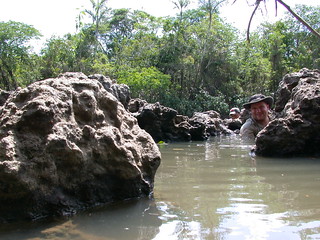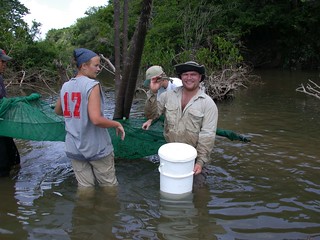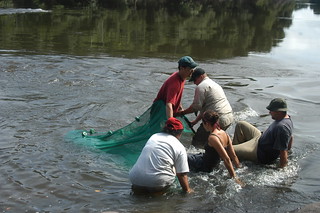Auburn University's Armbruster discovers catfish species, names it for Star Wars character
Article body
Jonathan Armbruster, biological sciences professor and curator of fishes for the Auburn University Museum of Natural History, has named a previously unknown species of catfish in honor of the enigmatic Star Wars fan favorite, Greedo.
The suckermouth armored catfish, Peckoltia greedoi, was found in 1998 by researchers along the Gurupi River in Brazil and is known physically for its large, dark eyes, sucker mouth and protruding bristles.
Armbruster obtained the specimens in 2005 for a manuscript he was preparing on the genus. Ten years later, he, along with David Werneke, Milton Tan and Chris Hamilton, all of the Department of Biological Sciences, was examining the specimen for characteristics when the connection was made.
"Chris looked at the specimen and said 'that looks like that guy from Star Wars,'" said Armbruster. "After a little prodding, I realized he was talking about Greedo. We then knew what the name had to be. The Peckoltia greedoi does bear a striking resemblance to Greedo."
Greedo, a bounty hunter from the spaceport Mos Espa, was killed by Han Solo in a brief scene from "Star Wars: Episode IV A New Hope."
"As a 7-year-old kid, I watched Star Wars in the theatre and it was a life-changing experience for me," said Armbruster. "I became a lifelong fan, and I now share that with my son. Greedo has always been a personal favorite of mine."
Armbruster has described more than 40 species of fishes, including a minnow found in the Auburn area. Although this is his first species to name after a character, he has honored friends and colleagues in the past.
"I have named a few species after colleagues like Peckoltia lujani for my former student, Nathan Lujan, Hypostomus pagei for my advisor, Lawrence Page, and Peckoltia sabaji for a close friend and colleague, Mark Sabaj Pérez," said Armbruster. "I've also had former students name species for me."
As a taxonomist, Armbruster looks at the systematics of fishes, or the naming of species and higher groups, and sees how they are related to one another.
Aside from the Peckoltia greedoi, Armbruster also described the P. ephippiata and P. lujani specimens collected in Brazil and Venezuela through his National Science Foundation All Catfish Species Inventory (ACSI) grant.
"In biology, taxonomy is probably the most important science," said Armbruster. "We have not even completed cataloging all of the species found locally, and in places like South America, it sometimes feels like we have barely started. We need names to be able to discuss anything about the biology of the organisms, and it is the one branch of biology used by every biologist alive."
Related Media
Related Links
Media interested in this story can contact Communications Director Preston Sparks at (334) 844-9999 or preston.sparks@auburn.edu.
Auburn University is a nationally ranked land grant institution recognized for its commitment to world-class scholarship, interdisciplinary research with an elite, top-tier Carnegie R1 classification, life-changing outreach with Carnegie’s Community Engagement designation and an undergraduate education experience second to none. Auburn is home to more than 30,000 students, and its faculty and research partners collaborate to develop and deliver meaningful scholarship, science and technology-based advancements that meet pressing regional, national and global needs. Auburn’s commitment to active student engagement, professional success and public/private partnership drives a growing reputation for outreach and extension that delivers broad economic, health and societal impact.










